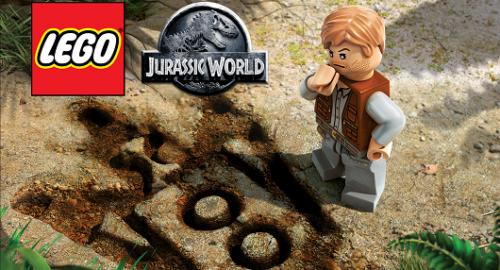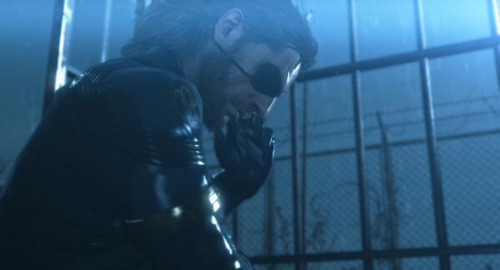JoJo’s Bizarre Adventure – All Star Battle is a fighting game based on one of the most popular manga series of all time – over 80 million copies of the JoJo’s Bizarre Adventure books have been sold in Japan. Now that is bizarre. Admittedly I am not a manga reader but I do watch a fair amount of anime (which tend to be based on popular mangas) and have never heard of JoJo’s Bizarre Adventure before coming into contact with this game. I did subsequently learn that there were several anime based on parts of the story. There was also a fighting game based on JoJo’s Bizarre Adventure on the PS2 but all this had previously passed me by.
• Developer: Cyberconnect2
• Publisher: Bandai Namco
• Reviewed on: PS3
• Release Date: Available Now


All Star Battle is a title that, at least initially, appears as though it is built around fanservice for a property that has never had a great deal of exposure to Western audiences. It took a while of wading through reams of text describing some fantastically bonkers backstory, but partly due to a solid fighting engine it won me over. You win. Fight.
I made a silly Street Fighter reference there as I’m an idiot but also as it is quite apt. Anyone that has played a modern day Street Fighter will be comfortable: pull back to block and use light, medium and heavy attacks – although they do not distinguish between kicks and punches. You can also throw an opponent, and fireball or dragonpunch style inputs are required for most special moves. The only radical departure from the SF formula is that the camera is not square on, but from a quasi-isometric position, similar to the alternative view available on Street Fighter IV on the 3DS. This zooms in to a more traditional straight on view as combatants get closer to each other.

One of the main additions to this traditional combat formula is the inclusion of the ability to rotationally dodge into the foreground or background – in a similar way to that seen in Soulcalibur or Dead or Alive. In All Star Battle this dodge is operated via a button press as opposed to an upwards or downwards dash, which does make it slightly more reliable but also means that it does not add an extra variety to attacks in the same way dodging does in the SC and DoA series.
The other additions are a set of environmental hazards and possible “Dramatic Finishes” unique to each level. One Dramatic Finish sees your vanquished opponent confined to the back of a rubbish truck and another sees an enemy flying over an open balcony. The environmental hazards vary from people or ghosts attacking you or running you over. Both add a nice variety to the encounters and are often humourous.
Much like Street Fighter IV there are two types of “super special moves” activated by a fireball motion in conjunction with two or three attack buttons – called a GHA and an HHA. Although there is no distinction between the two powers with regards to the power bar that both powers feed from, which is filled by inflicting or receiving damage. The lower level HHA attacks take a single bar of energy and it takes two bars to trigger the heavier GHA attack moves – which in one character’s case produces an insanely high 1,000 hit combo. You max out at three bars in total meaning that you can have one of each attack banked at once. Oddly, due to the heavier attack having a single button (or right trigger) shortcut, it is actually slightly easier to reliably pull off than the lesser super special move.

Arcade mode is a fairly standard, battle your way through eight combatants of increasing difficulty, with a rating given for each fight. This is averaged to give an overall final grade – on the, still crazy and never explained, Japanese rating system of A-D with an “S” rating being one higher than A. Your grade for each fight is based on three factors; Time, Life and Style. This grading systems is also found in the games other modes. There are the standard offline and online Versus modes as well as a single player Story Mode and a online multiplayer campaign mode. There is also a, fairly limited, training mode.
The single player Story Mode takes you through the seven generations of the Joestars. It tells the tale of Jonathan Joestar and his subsequent descendants battles with an immortal vampire named Dio Brando. The story is broken down into seven chapters, with an eighth chapter unlocked when they are completed. We follow the Joestar family from their roots in 19th century England, via 1930’s New York, to 1980 & 1990’s Japan and then a quick trip to Italy in 2001 before ending back in Japan in 2011. It then takes a slightly random turn into an alternative timeline version of 1890’s America and Japan in 2011. Phew. Enough time travelling, let’s get back to the fight!

The Story Mode sees you battle you opponent with a set of fixed conditions. To start with these can be helpful additions such as increased attack power or weakened opposition, but generally as the game progresses they tend to give you a disadvantage – such as starting with half the normal amount of health or having you opponent having a continually refilled special meter. If any of these conditions become too much of an obstacle or if just struggling with a difficult fight, then temporary upgrades can be purchased. These can strengthen yourself or weaken your opposition. Their potency varies with price, but all are easily affordable.
The addition of these upgrades makes it very easy not to get stuck or frustrated. It may make it a bit too easy for some, but the challenge is there if you want it and easy to bypass if you do not. Once you have completed each chapter you unlock the reverse set of match-ups, seeing you take control of your previous foes with an alternative set of conditions.

Overall the game makes a terrible first impression, particularly in the presentation department. A lot of the story of the game is told via text and then read out in Japanese. Presentation of this text is bland and uninteresting, seems to do a fairly rushed job of communicating the story and has a few errors. I was at one point fighting with my opinion, but it is hard to stay mad at a game that has a fighting stance named “Moody Jazz Stand.” While completely insane in parts, it is easy to start to feel very comfortable in a game that offers accessibility to a breadth of content, unpinned by an enjoyable fighting system.
The artstyle has dramatic flourishes of black ink that suit the manga origins. Again, this is reminiscent of Street Fighter IV, but is highly suitable and grew on me the more I played. Many aspects of the game are also presented with a good deal of humour that makes it even easier to have a good time while playing.

With a bit of time, JoJo’s Bizarre Adventure – All Star Battle soon becomes an easy recommendation to make to a fighting game junkie looking for their next hit. It may be worth telling a friend about that may have passed it by. Tell them; it is bizarre but you get to go on an adventure. You will have to fight some crazy people. There are heroes, there are villains. But in the end you win.







Ridcullys Hat
I had heard of this before (the manga and anime) but have no idea what its about. I am very interested in this game though and love a bonkers fighter as much as the next japanophile. I’ve even gotten back into watching them again and have found this series in some places. If i had a ps3 i would snap this up. Excellent review by the way and even though you have no idea about the series, the bonkers ideas and the game has obviously shone through. Having missed out on so many classics on the ps3 i may do my usual thing and look for a cheap deal on last gen machines i missed out on and see what other gems i can get for cheap.